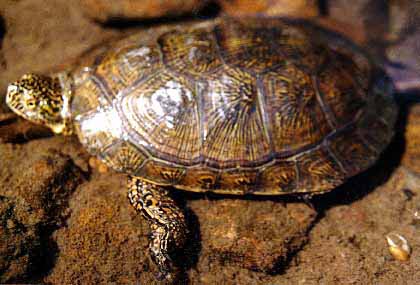Why Did the Turtle Cross the Road?
Tony Hacking
Have you ever seen a turtle
crossing a road? Why was an animal that lives in
the water walking around on land? Well, in the case of a turtle I
encountered crossing the parking lot of a golf resort in Rohnert Park last
February, a non-native red-eared slider (Trachemys scripta
elegans), it was probably coming out of a water obstacle to
forage in a nearby flooded part of the course. But this turtle, most likely
a released or escaped pet, was a “city turtle”. Up here on the Rivers, we
have the (north)western pond turtle (Clemeys marmorata
marmorata), the only turtle native to this part of California.
Actually, we’re lucky to live in an area where these ancient reptiles are still common. Habitat alteration and fragmentation, trampling by domestic livestock, collection for the pet trade, direct mortality from vehicle collisions, and introduced competitors and predators (especially bullfrogs) have resulted in declines and localized extirpations across the range of this species, but the Klamath River Basin is considered something of a stronghold, as it is for many species imperiled elsewhere.

The WPT is a very shy and cautious animal that likes slack or slow-moving bodies of water, or ponds, as its name implies. There, if it survives its early years, it lives out its long life (estimated to be 50-70 years) foraging mostly for aquatic invertebrates including crayfish, but also opportunistically taking advantage of any tadpoles or small fish such as speckled dace. Western pond turtles also seem to enjoy dining on whatever carrion they can find with their keen senses of sight and smell.
But you say you’ve seen turtles crossing the Salmon River Road, and the Salmon is certainly not a slack or slow moving body of water. Well, this may be true for the main channel, but think of the side channels and ditches. There is suitable habitat in side ponds near Oak Bottom on the lower Salmon. The old mine pond at the Nordhiemer Group Camp is occupied, and that roadside pond covered in green duckweed just up the South Fork looks like good habitat (it is, editor). Even remote, upland ponds may have resident turtles.